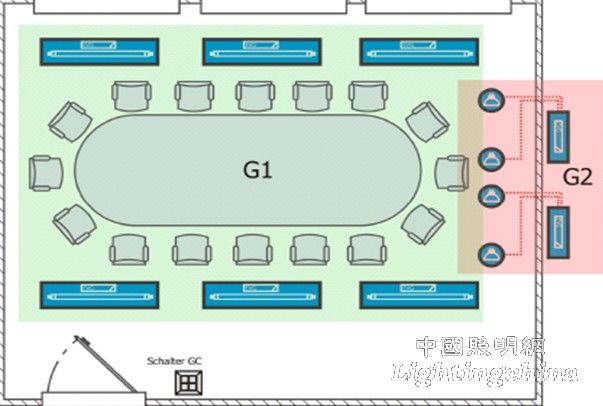Origin (Origin) The earliest lighting control technologies were mainly used in theaters and entertainment venues because they required lighting control techniques to create lighting effects in different atmospheres. The lighting control technology applied in the above places is much more complicated than the current technology, and the degree of automation is very low. However, due to the strong pertinence, such lighting control systems are widely used in theaters and entertainment venues. Through continuous application and innovation, this type of lighting control system has evolved into what we call "lighting scene control" today. Another branch began with electrical automation control in 1960 and entered the general commercial building. This trend opened the way electrical switches using low-voltage weak current signals to control lighting. The first world energy crisis of 1970 prompted people to start thinking about how to manage energy and save energy. Therefore, one of the main purposes of the subsequent lighting control technology is how to reduce the energy consumption of lighting, which we usually refer to as "lighting energy saving control". The origins of the above two lighting control technologies can be summarized as: "lighting scene control" and "lighting energy saving control". Lighting scene control (Scene setting) Early "lighting scene control" applied in theaters and entertainment venues gradually evolved into venues that require scene control, such as multi-purpose halls, hotels, conference rooms, and the like. In places where "lighting scene control" is applied, people can quickly and conveniently achieve a preset lighting effect by pressing a button. This lighting effect can be a switch combination of a lighting circuit or a lighting circuit. A combination of brightness values. The "lighting scene control" system is usually manually operated and offers many lighting scene options. Once a fixed lighting scene is selected, the illumination will remain at a certain brightness until the next lighting scene is called. The "lighting scene control" system usually requires the selection of a specific illumination source (such as a halogen) because not all illumination sources are suitable for "lighting scene control" adjustments. Even today we still need to select a specific light source for "lighting scene control." Therefore, such systems are often an integral part of theaters, entertainment venues and hotel lighting solutions or interior design solutions, and require lighting designers or interior designers to consider them in advance, so consider the application of the "lighting scene control" system in advance. It is important. The “Lighting Scene Control†system used to be mainly used in specific places (such as theaters and entertainment venues), but today it is constantly influencing the application of major markets due to the corresponding manufacturers (Clipsal, Lutron, Dynalite, etc.). Energy saving control Due to the need for energy saving in lighting, early lighting control systems evolved into energy-saving controls with automatic functions, such as turning off the lights when no one is turning off, or turning off the lights when there is enough sunlight. These functions can be automatically controlled by the intensity of time or illumination. Most of the early "lighting energy-saving control" systems are typically based on existing installation conditions and electrical equipment, making it difficult to save, optimize and advanced applications. The early solution was to switch lights automatically, so the dimming function has not been applied in the early "lighting energy control" system. Compared with the "illumination scene control" system, the early "lighting energy-saving control" system is too simple and rigid, so the early "lighting energy-saving control" technology application often ignores the lighting design, which will affect the original lighting design, so often Not welcomed by lighting designers. However, due to the application of many switches, it is convenient for people to control the individual's lighting, which satisfies people's requirements for controlling lighting, improves the satisfaction of use, and avoids the lack of lighting design. Also due to the corresponding manufacturer (Schneider, ABB, Siemens, etc. continue to optimize control technology and functions, and the “Lighting Energy Saving Control†system has been widely used in public buildings and office space. The combination of the two (Convergence) When the dimming function becomes a practical energy-saving mode, the “lighting scene control†and the “lighting energy-saving control†are combined into one, and the promotion and application of the fluorescent dimmable high-frequency digital electronic ballast promotes the above two. Combine. As we mentioned before, "lighting scene control" is mainly to adjust the brightness, and "lighting energy saving control" mainly relies on switching control means. Due to the emergence of digital dimming technology, the dimming function can be easily integrated into the field of building intelligent control. Therefore, the current lighting control system is not only a switch, a scene, but also can adjust the lighting according to people's daily life and the intensity of daylight. At the same time, due to the continuous development of lighting control technology in entertainment venues, a lighting control protocol mainly for the stage was born, such as the DMX512 protocol, which enables users to buy DMX512 devices generated by different manufacturers and control lines. Control under the same complex lighting console. Through continuous application and innovation, DMX512 protocol has become the main technology of lighting dynamic control. Therefore, lighting control technology is divided into three categories: “lighting scene controlâ€; “lighting energy saving control†and “lighting dynamic controlâ€. 
